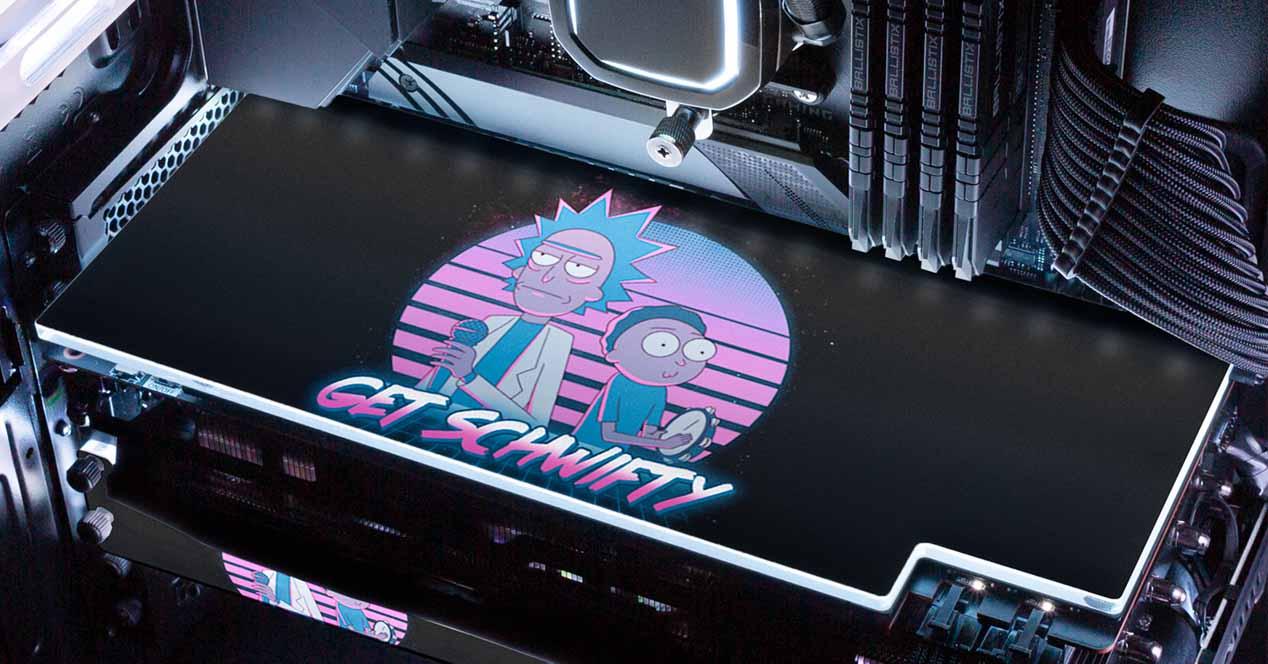Surely many of you have heard of the back plate, especially when we talk about heatsinks for CPUs and graphics cards. Is it a purely aesthetic element? It’s used for lower the temperature? Does it really help? Is a graphics card that has it well better than one that doesn’t? In this article we will define what this component is, but more importantly we will tell you what is your function and what are its characteristics.
Who else and who knows the least what a backplate is: that usually metallic piece that covers the backs of graphics cards. In the field of processors, the part which is installed behind the socket is also called backplate and which serves to distribute the weight of the heat sink so that it does not damage the motherboard, but in this case its function is very defined and no let’s go.
What is the real function of a backplate?
The answer to this question is that it depends. Initially, in many models, the back plate had a dual function: on the one hand, a function aesthetic (and this is still present today as it goes without saying), but also to provide the entire graphics card with a increased rigidity, something especially useful in very long graphics to prevent it from being bent. In the latest models of graphics cards, which have memory chips installed on the back, the back plate has acquired a third function, which is none other than to help refrigerate these components from the back of the PCB, even passively.
For this reason, by unscrewing the back plate of a modern graphics card, we can see that it contains thermal sealant (not paste), a strong, rubbery compound that serves to promote heat transfer precisely from the chips to the back plate, which is Metallic and with a large area, it greatly improves the temperature.
In the latest graphics card models this has gone further, because even with short PCBs, the manufacturer has lengthened the heat sink so that it protrudes from the back so that a fan does not “hit” the PCB and does not cool this part of the map directly. PCB, thus lowering its temperature and promoting better heat dissipation of the chips. We saw it without going any further in the Founders Edition of NVIDIA RTX 3070.
Thus, if initially the function of the back plate was simply aesthetic and to give greater rigidity to the graphics, in the latest generations of graphics cards the function of acting as a passive heatsink (and active in some like the RTX 3090, remember), its importance was therefore emphasized.
In some cases, in fact, the back plate is only for screwing in the graphics card heat sink, or at least upgrading it if it’s too large.
Is a graphic with a backplate better than without it?
Usually, any midrange graphics card already has a backplate installed for precisely all of these functions that we have described above. Graphics that don’t have it isn’t that they’re worse not having it, it’s that they don’t need it and therefore can live without it. Would the same graphic be better if it had a backplate? Probably yes, as it would have greater resistance to twisting due to the weight and also if you have chips on the PCB on the back, those would be at a better temperature.



However, there are still plenty of graphics cards out there that don’t need a backplate and wear it just to give the graphics another aesthetic, as we’ve seen for example in the MSI GTX 1070 GamingZ, like you can see it in the gallery above.
The post What is a back plate? Are the GPUs that carry it better? first appeared on HardZone.











